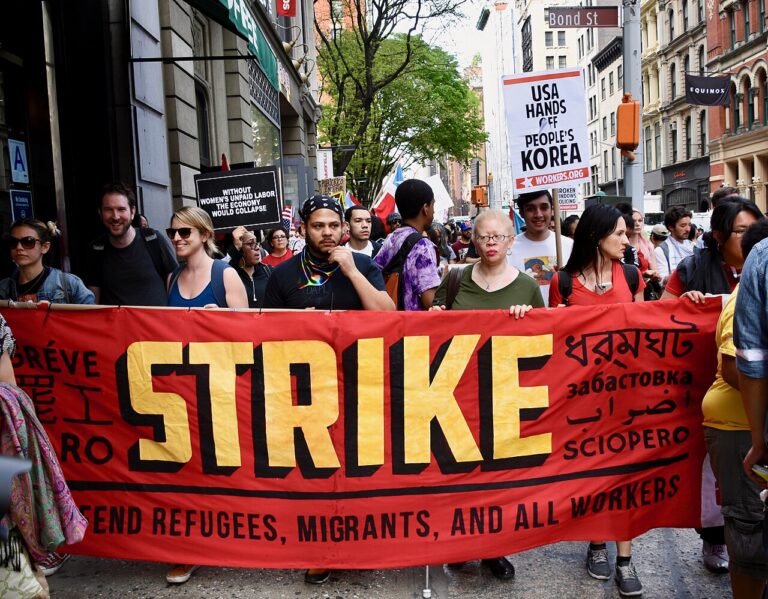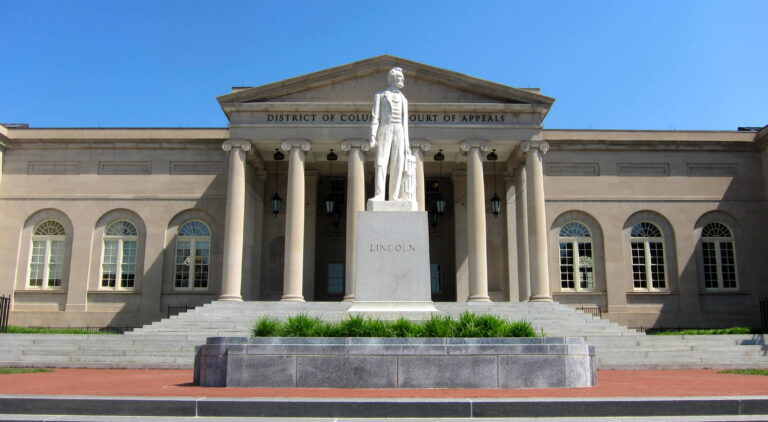The government shutdown ended Friday afternoon after 35 days. Many political players and commentators are attributing Trump’s “caving” on the border wall to Nancy Pelosi’s prowess at controlling the struggle between the parties, or to rising public resentment and fear of the shutdown’s long-term economic and social costs. But it is worth highlighting that hours earlier on Friday air traffic was disrupted because not enough essential government workers showed up to work without pay. The Federal Aviation Administration announced that, due to shortages in air traffic controllers, it was necessary to restrict flights into and out of New York’s LaGuardia Airport. Delays also hit Newark, Philadelphia, and Atlanta airports. Barred from striking, the National Air Traffic Controllers Association has stressed that absences on Friday were not the result of any coordinated activity.
Before Trump announced the three-week reopening, the head of the flight attendants’ union was calling on air travel’s private employees to act in solidarity with their public counterparts. Sara Nelson began calls for a general strike when she spoke at an award dinner last weekend. In a rousing speech, Nelson asked AFL-CIO leaders to move towards a tactic with a long but long-dormant history. (The last general strike in the U.S. occurred in 1946.) In an interview in Slate, Nelson discusses what we might learn from the shutdown about the future of the labor movement.
Trump has promised to get federal workers their back pay “very quickly or as soon as possible,” according to Vox. Off-schedule paycheck processing is underway, but it is unclear if the payroll system will be able to move fast enough to get the checks out this week. If delays hamper their delivery, the back pay will be added to regularly scheduled paychecks. Federal contractors have not been guaranteed any back pay. About fourteen Democrats in the Senate are currently supporting a bill to get low-wage contractors pay.
On Friday, the NLRB granted the nation’s contractor-heavy businesses a win. The NLRB ruled that the Dallas-Fort Worth Airport’s SuperShuttle franchisees are contractors who do not have the rights to unionize and engage in collective bargaining under the NLRA. The SuperShuttle ruling overturns an Obama-era test for determining whether a worker was an employee or an independent contractor, and thus unprotected by federal labor regulations. The NLRB has long applied a common-law test with ten nonexhaustive factors to determine the status of a worker. But in 2014, the NLRB limited the reach of one extra factor – “entrepreneurial opportunity.” In a dispute involving FedEx, the NLRB then held that the presence of such opportunity was not dispositive, but was merely to be considered in light of other factors. Additionally, more exacting scrutiny should determine whether “opportunity” was “actual” rather than theoretical. This week, reversing course, the NLRB put “entrepreneurial opportunity” back at the center of the test. The sole Democratic Board member dissented. Lauren McFerran disagreed both on doctrinal grounds – she sees no evidence that “entrepreneurial opportunity” defines the common-law test – and on pragmatic grounds, for the new standard might as well be called “the economic unrealities test” due to its rejection of the realities of actual working relationships today. Over 10.6 million workers nationwide are independent contractors, and so the ruling is anticipated to further “empower” a number of firms. As Alison Griswold writes in Quartz, “the case is not about Uber, and yet it’s entirely about Uber.”
Eric Griffith in the New York Times explores the “toil glamour” aesthetics of “hustle culture,” which is, at bottom, an exploitative swindle that comes from the top. Financiers, managers, and executives, and companies like WeWork, increasingly define the only glorious life as an overworked life. Hustle culture both serves to squeeze more productivity from labor, and also to justify the wealth amassed by tech sector elites. And it’s taken on a spiritual dimension for millennials. Griffith’s is among a recent suite of essays that have taken revisionary angles on what was once a popular pastime: the aggressive character assault on millennials, deemed ruined by participation trophies. (Meanwhile, millennials are statistically more likely to be “workaholics” than older generations, are delaying life events because they are saddled with debt, and – for those born in the 1980s – may never recover long-term from the Great Recession.) This recent reckoning with the struggles of millennial workers comes at a time when new kids are on the scene: “generation z” is now commanding attention – as consumers, workers, and marketplace participants who are blurring the lines between generational roles. Unlike millennials, Gen Zers are from the get-go being described as “resolute, smart, pragmatic and hard-working,” having grown up in – rather than graduated into – an age of economic instability and tech-driven social change.
At the World Economic Forum Annual Meeting in Davos, Switzerland, a “hidden agenda” lurked: “many of your bosses want machines to replace you as soon as possible,” writes Kevin Roose in the New York Times. Roose observed at the WEF meeting that there were two narratives about automation. One, for the public: job loss should be at worst a regrettable byproduct of an overall healthier work place and economy, and where social welfare programs and labor market reorientations should be advanced to remedy any bleeding. And another, shared among capital and leaders in private: to stay competitive, firms should “rac[e] to automate their own work forces . . . with little regard for the impact on workers.” Automation, and lean operations, can deliver “fat profit margins.”
Although Denver teachers voted overwhelmingly to strike last week, Denver Public Schools sought mediation assistance from the Colorado Department of Labor and Employment, which will delay strike action previously planned for Monday. The Department’s process to review whether to step into the dispute could take up to 24 days; if the Department does intervene, then a strike is on hold for up to 180 days.






Daily News & Commentary
Start your day with our roundup of the latest labor developments. See all
January 9
TPS cancellation litigation updates; NFL appeals Second Circuit decision to SCOTUS; EEOC wins retaliation claim; Mamdani taps seasoned worker advocates to join him.
January 8
Pittsburg Post-Gazette announces closure in response to labor dispute, Texas AFT sues the state on First Amendment grounds, Baltimore approves its first project labor agreement, and the Board formally regains a quorum.
January 7
Wilcox requests en banc review at DC Circuit; 9th Circuit rules that ministry can consider sexual orientation in hiring decisions
January 5
Minor league hockey players strike and win new deal; Hochul endorses no tax on tips; Trump administration drops appeal concerning layoffs.
December 22
Worker-friendly legislation enacted in New York; UW Professor wins free speech case; Trucking company ordered to pay $23 million to Teamsters.
December 21
Argentine unions march against labor law reform; WNBA players vote to authorize a strike; and the NLRB prepares to clear its backlog.